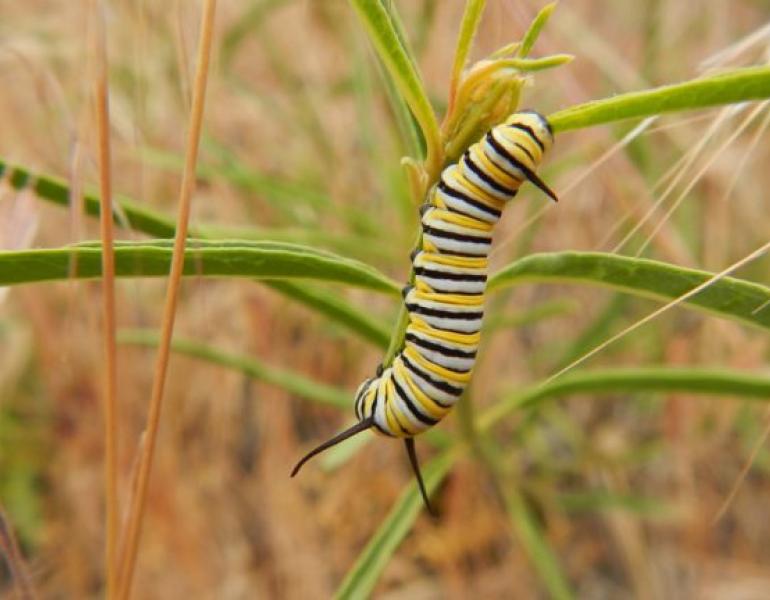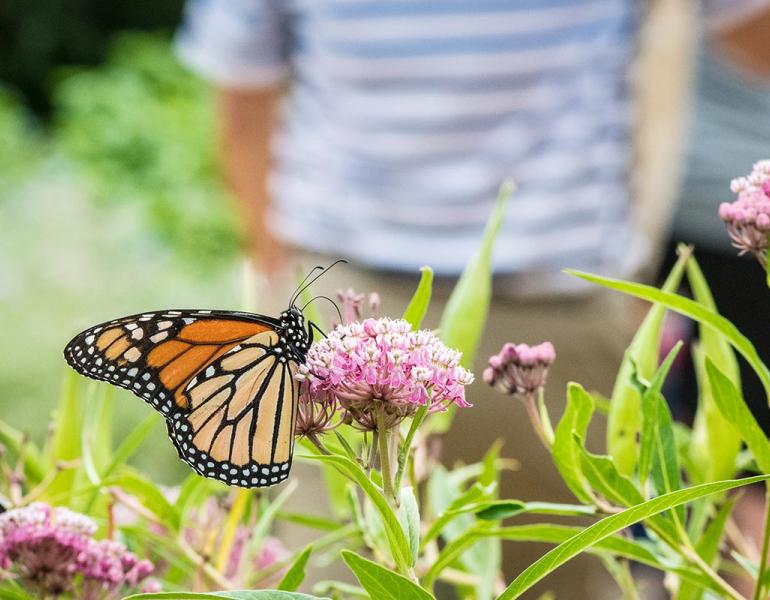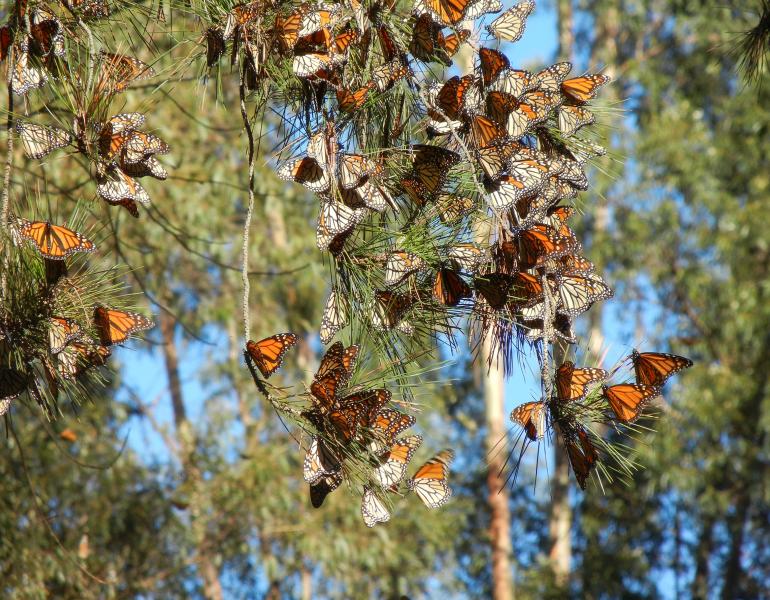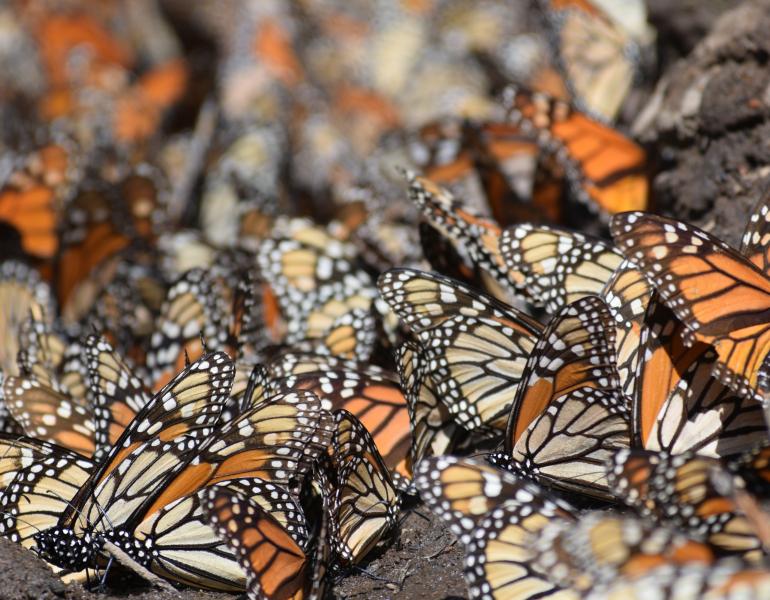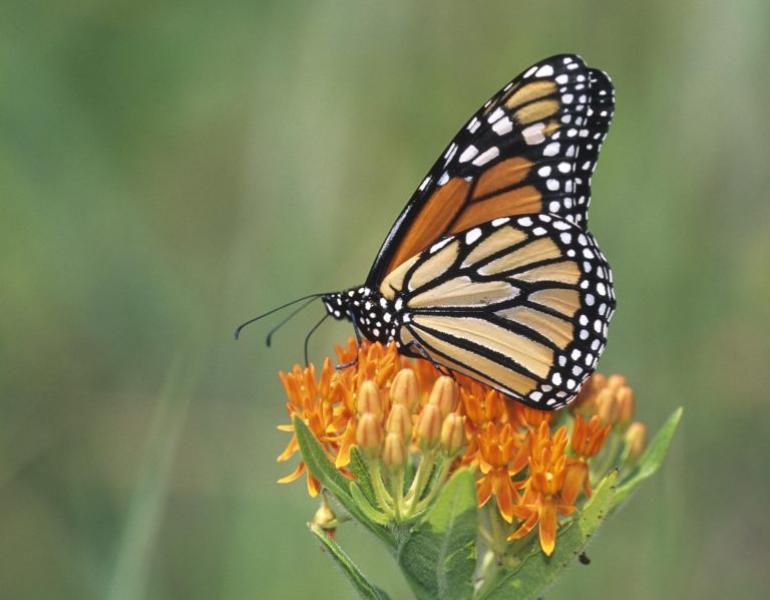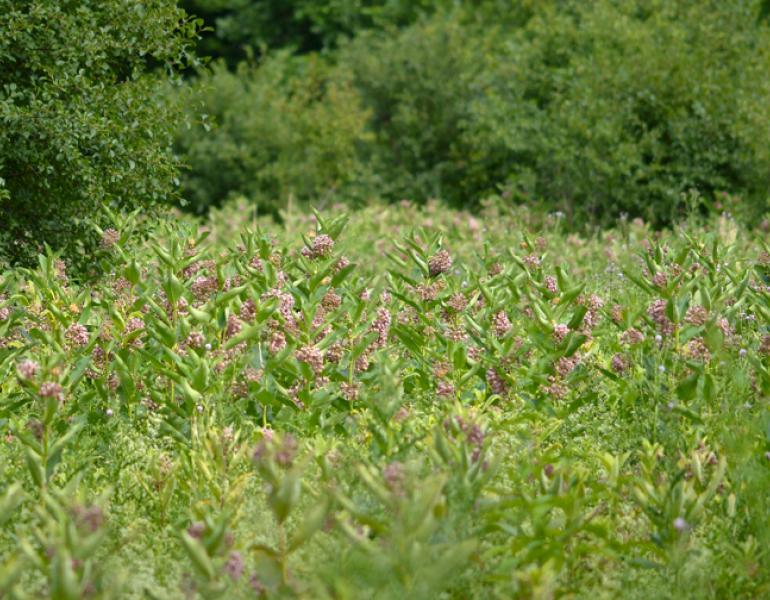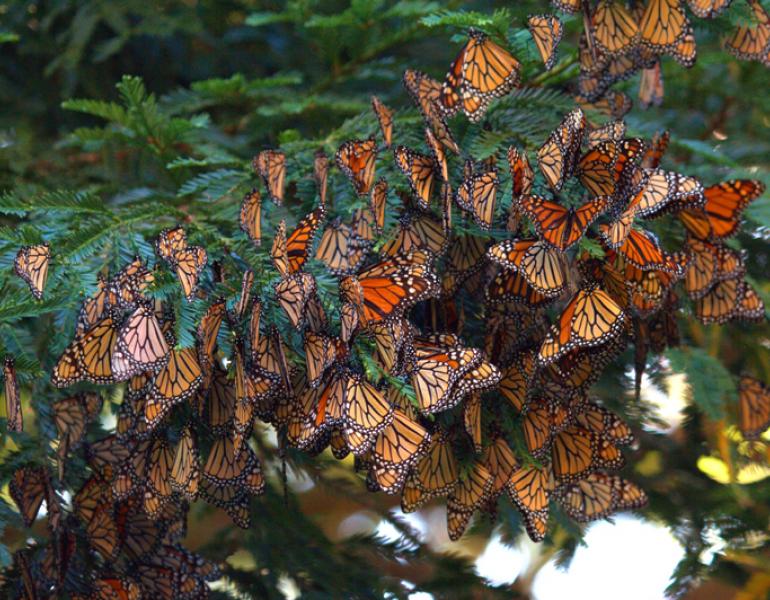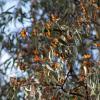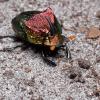Instead of rearing—which is risky and unproven in helping monarchs—we should focus on more effective, science-backed ways to conserve these glorious wild animals.
Eastern Monarchs
Everything You Need to Know About Eastern Monarchs and How to Help Them
Monarch butterflies are famous for their colors and impressive migration. But they don’t all migrate in the same way! Discover what makes the eastern monarch population special.
Applying a Holistic Approach to Monarch Conservation
Xerces is a science-based conservation organization and our work on monarchs is no different. Whether it is restoring overwintering sites in California, creating breeding habitat in New York State, or protecting monarchs from pesticides, science informs our actions and maximizes our conservation return.
Pollinator Conservation Program Digest – March 2021
In our March 2021 Pollinator Team Digest, Alina Harris describes a community-based habitat project in New Hampshire to help monarch butterflies and other pollinators and Kaitlyn Haase shows the varied audiences and range of topics covered in recent webinars in the Southwest.
Monarch Numbers from Mexico Point to Declining Population
Surveys of monarch butterflies overwintering in central Mexico by World Wildlife Fund–Mexico found that the butterflies occupied an estimated 2.1 hectares of forest during the winter of 2020–21, approximately 26% less than the previous winter. Scientists estimate that 6 hectares are necessary to sustain the population.
Monarchs Overwintering in Mexico Down 53%
This decline makes it clear that monarchs are not recovering and still urgently need Endangered Species Act protection in the United States and extraordinary conservation efforts throughout North America. Learn how to help here.
Working to Conserve Monarchs from Coast to Coast
The Xerces Society is working across the U.S. to conserve this beloved species, and there are a number of ways you can help!
How to Support Monarch Butterfly Conservation—During Earth Week and Beyond!
Helping the monarch back to full health isn’t going to be easy or quick, but together we can transform the landscape to allow the monarch to rebound—and give our children the gift of watching orange wings flap in the sunshine.
Tropical Milkweed—a No-Grow
Milkweed is in demand, and that demand has been filled in recent years by tropical milkweed, a non-native species. But is planting tropical milkweed potentially doing more harm than good?
1.3 Billion Stems of Milkweed Needed in Midwest to Recover Monarch Population
A new study from the USGS, Univ. of Arizona, and partner organizations finds 1.3 additional milkweed stems are needed in the Midwestern U.S. to recover monarch butterfly populations.
Western Monarch Conservation: A 40 Year History
For 40 years, the monarch migration phenomena has been recognized as a conservation priority.
To Save Monarchs, We Need More than Just Milkweed
Adult monarchs need nectar to fuel them during spring migration and breeding and to build up stores of fat which sustain them during fall migration and winter.

